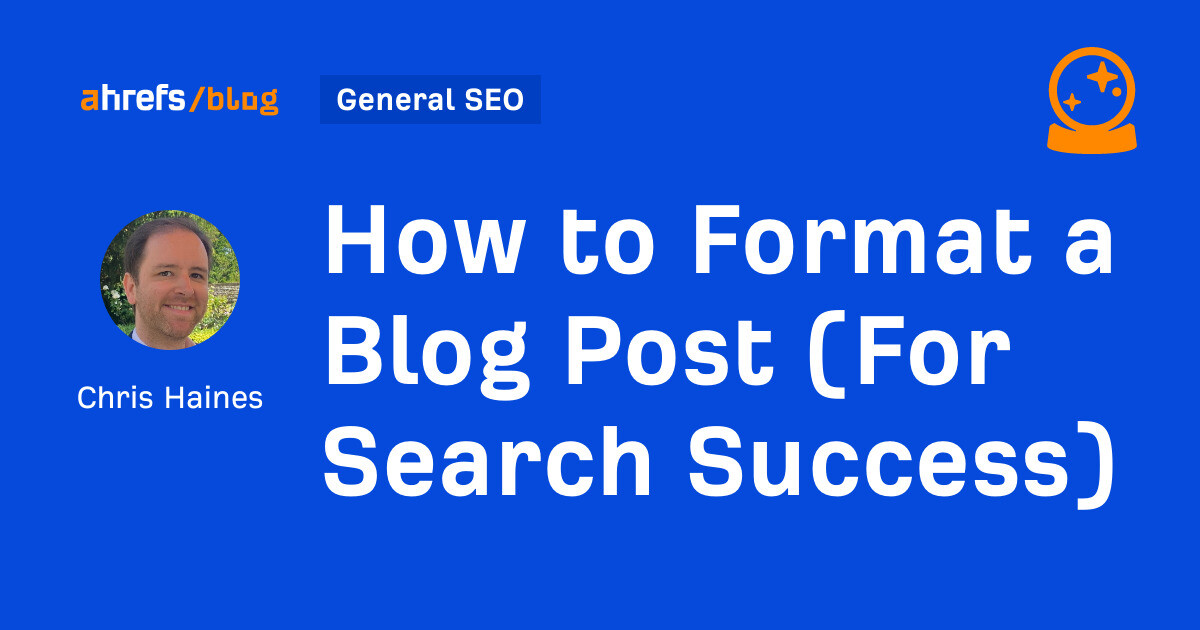When you’re writing a blog post, it’s easy to overlook the formatting. But how exactly should you format your blog posts to get more engagement and search success?
When it comes to writing the introduction, keep it simple, concise, and tailored to your audience.
If you want a defined approach for formatting your introduction, you can use the Problem-Solution-Proof (PSP) introduction formula.

Using the PSP formula means you can get straight to the core of the topic by outlining the problem, giving a solution, and providing proof of why your audience should trust you—all in just two paragraphs.
It also means there’s space to put an image above the fold, making your post more visually engaging for visitors.
Once you’ve perfected your introduction, it’s time to consider how to arrange the rest of the article.
The reality is that many people do not read from start to finish anymore. A study by Nielson suggested that only 16% of its test users read an article word by word.
So it’s important to make your articles scannable to maximize engagement on your blog. The easiest way to do this is to use headings or, more specifically, H1 tags and other <H> tags.
Headings also have a secondary benefit, as they help to provide an SEO-friendly structure for your article.
Here’s what it looks like in practice. You want to aim for a clear hierarchy.
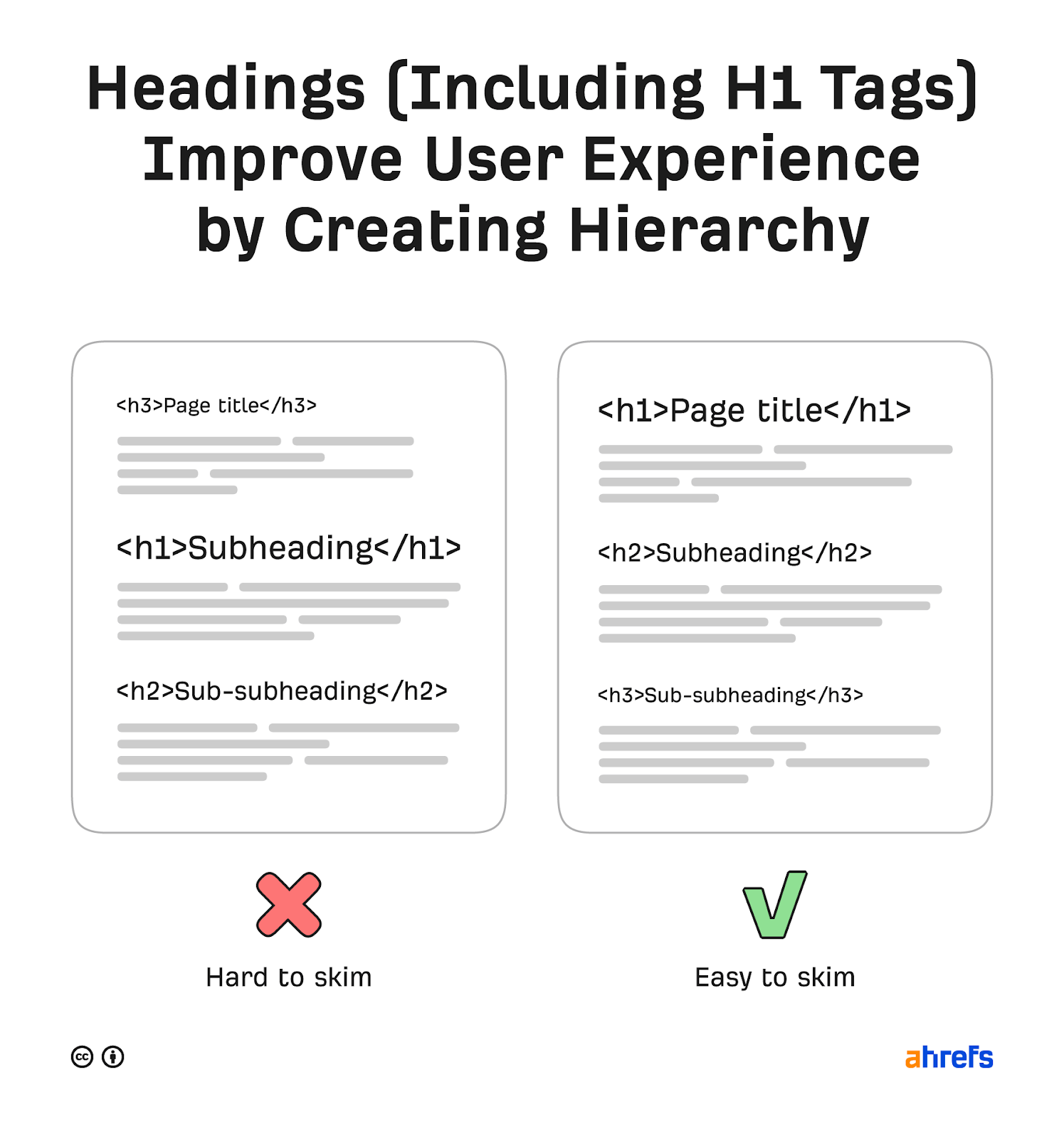
In my opinion, your headings should have two qualities:
- Individually, they should have an impact and catch the reader’s attention.
- Collectively, they need to form a logical outline and indicate the key elements of the article at a glance.
In practice, it’s often a balancing act: You’ll need to be able to structure posts in a logical, hierarchical way and also entice the reader to read on.
Generally speaking, a lot of content on the internet falls into these categories:
- List posts
- Step-by-step guides
- Beginner’s guides
- Expanded definition
- Reviews
For this reason, before you create your written content, it’s a good idea to research what type of content is already ranking for your target keywords so that you can format it properly.
This may seem like overkill, but you don’t want to waste time creating content in a format that readers are unlikely to engage with. So it pays to get it right from the start.
For example, if we write a 2,000-word article on “how to tie a tie” and visitors are expecting a video, it’s unlikely our written content will ever get a chance to appear at the top of the SERP because it’s not the type of content our audience is looking for.
To show you how quick it is to check for the dominant content type, let’s jump into Ahrefs’ Keywords Explorer, plug in “how to tie a tie,” and scroll down to the SERP overview.

We can see from this search that the top result is a video hosted on YouTube. That means in order to compete in this SERP, we’ll probably need to create a video on this topic.
With that said, let’s take a look at some of the most common written content types that you can easily format for.
List posts
List posts are very common, especially in certain niches where visitors are looking for inspiration or ideas.
Let’s start by plugging in “things to do in capri” in Keywords Explorer.
If we scroll down to the SERP overview, we can see that almost all of the results contain a number, meaning they are likely to be list posts.

From this example, as there are so many list posts ranking on the first page for this query, we’ll need to stick to the list post format in order to stand a chance of ranking on this SERP.
Here’s an example of the format you can use for a list post:

Step-by-step guides
Let’s now plug in another different keyword. I’ve added “podcasting guide” into Keywords Explorer to see what we get.
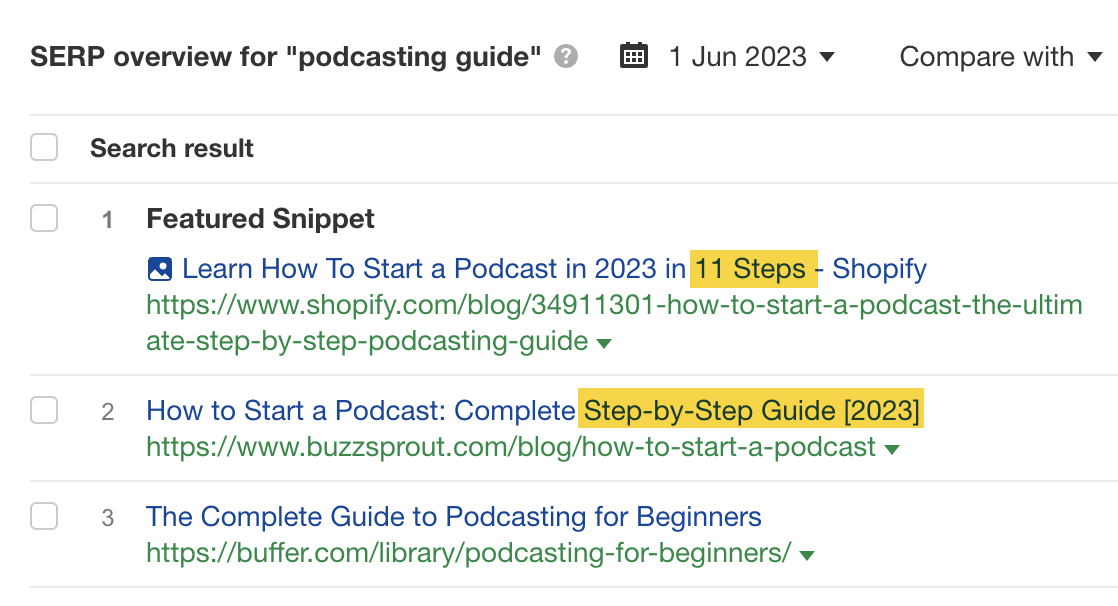
Although the SERP result titles contain numbers as well, we can see that the dominant content type at the top of the SERP is about providing step-by-step guides.
Tip
Sometimes, you’ll need to click on the URLs and visit the webpage to double-check the content type.
Here’s an example of the format you can use for a step-by-step guide:
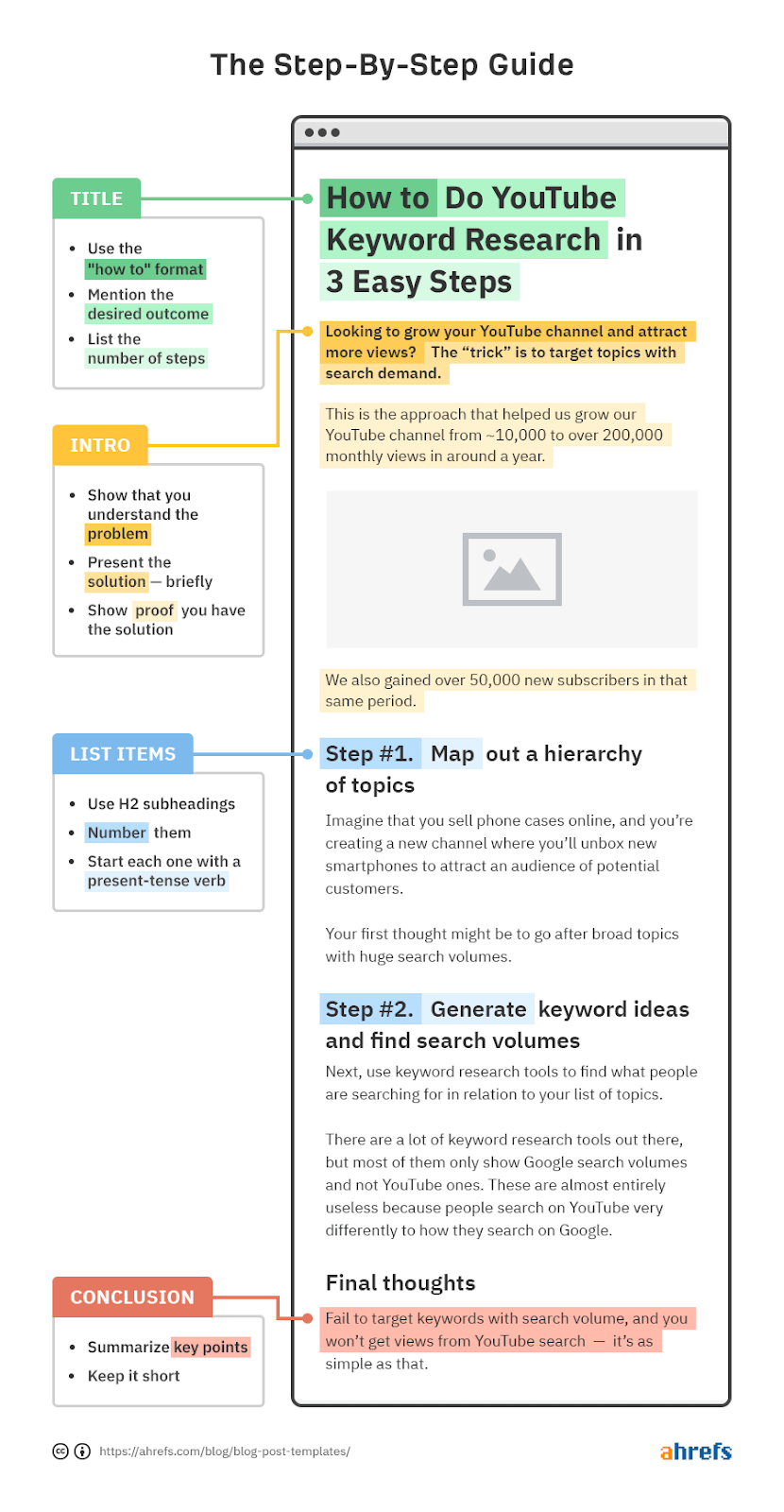
Beginner’s guides
Let’s take a look at another content type. I’ve plugged the keyword “chess basics” into the SERP overview.
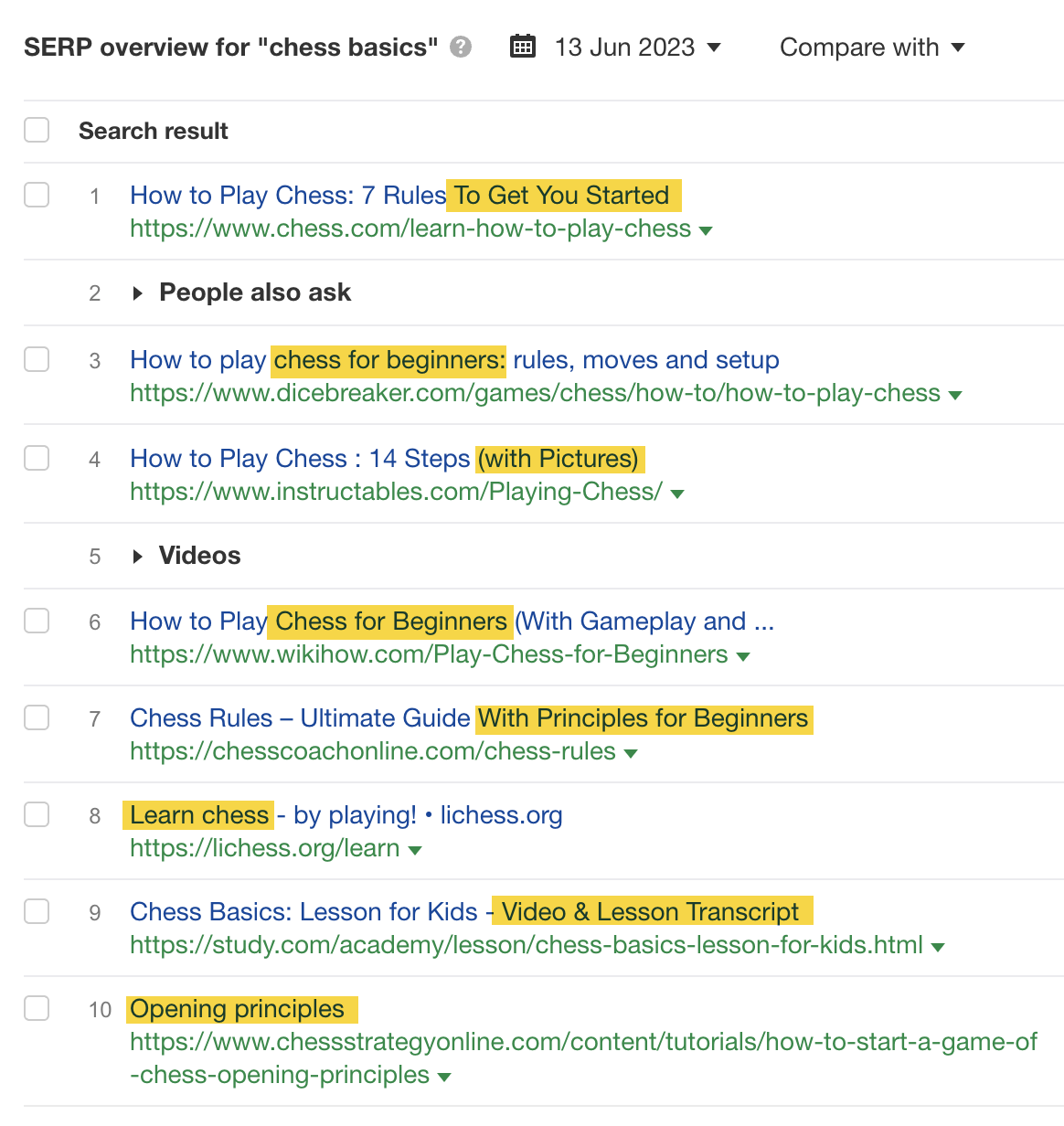
From my highlights, we can see that the title tags of these pages are aimed at beginners.
If we wanted to create a beginner’s guide for a topic, the format of the post might look something like this:

Expanded definition
Another common type of content is the expanded definition. This type of content explains the meaning of a thing or concept before going into more detail about it.
Let’s plug in “latte” into Keywords Explorer and scroll down to the SERP overview.

In this example, we can see that the top result is asking what a latte is.
We can use this format to build out a post on this topic.
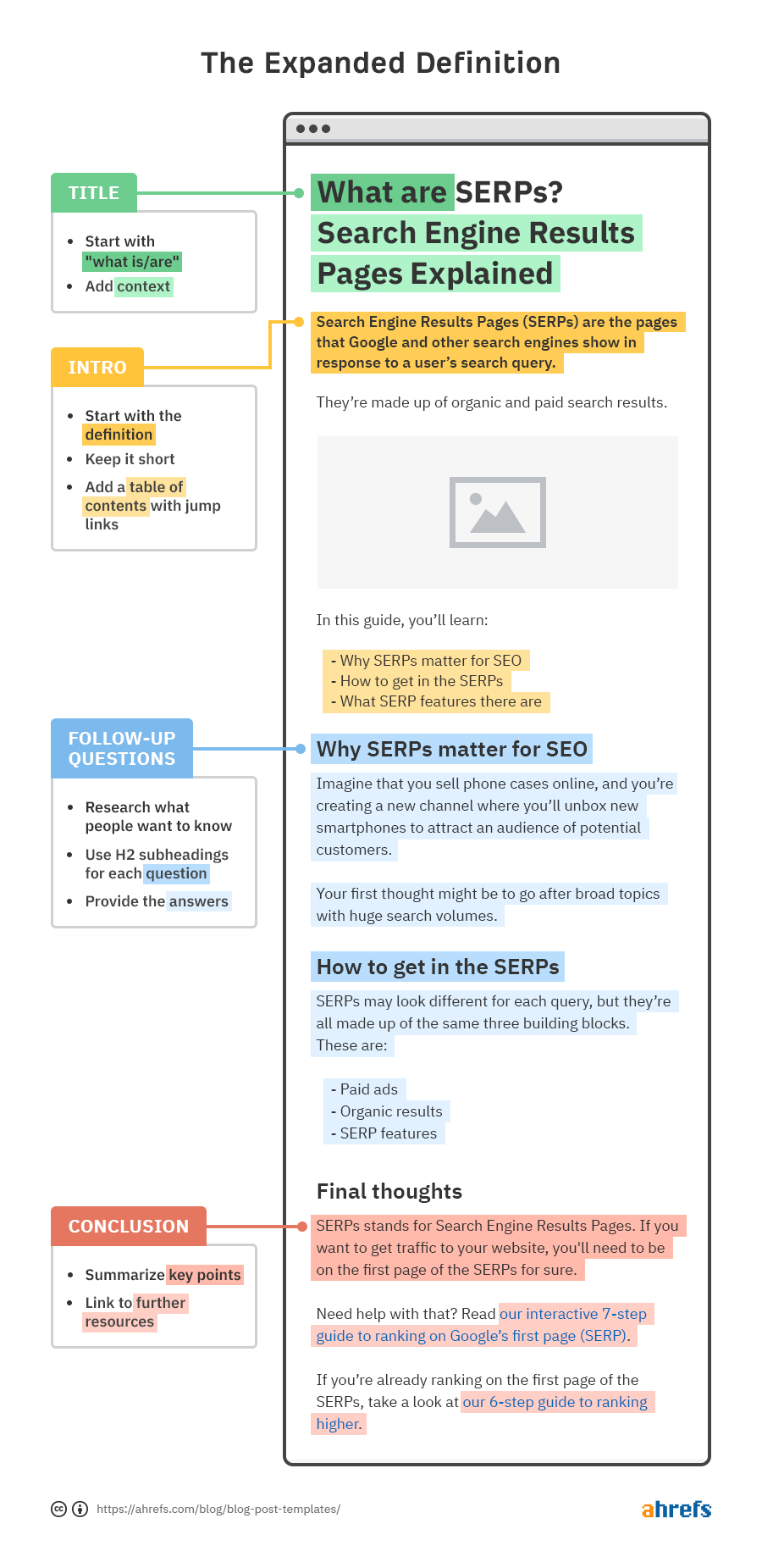
Another element you can add to an “expanded definition” format post is FAQs. Adding this section with schema can be a good combination.
Here’s an example of some popular FAQs about H1 tags from our blog:
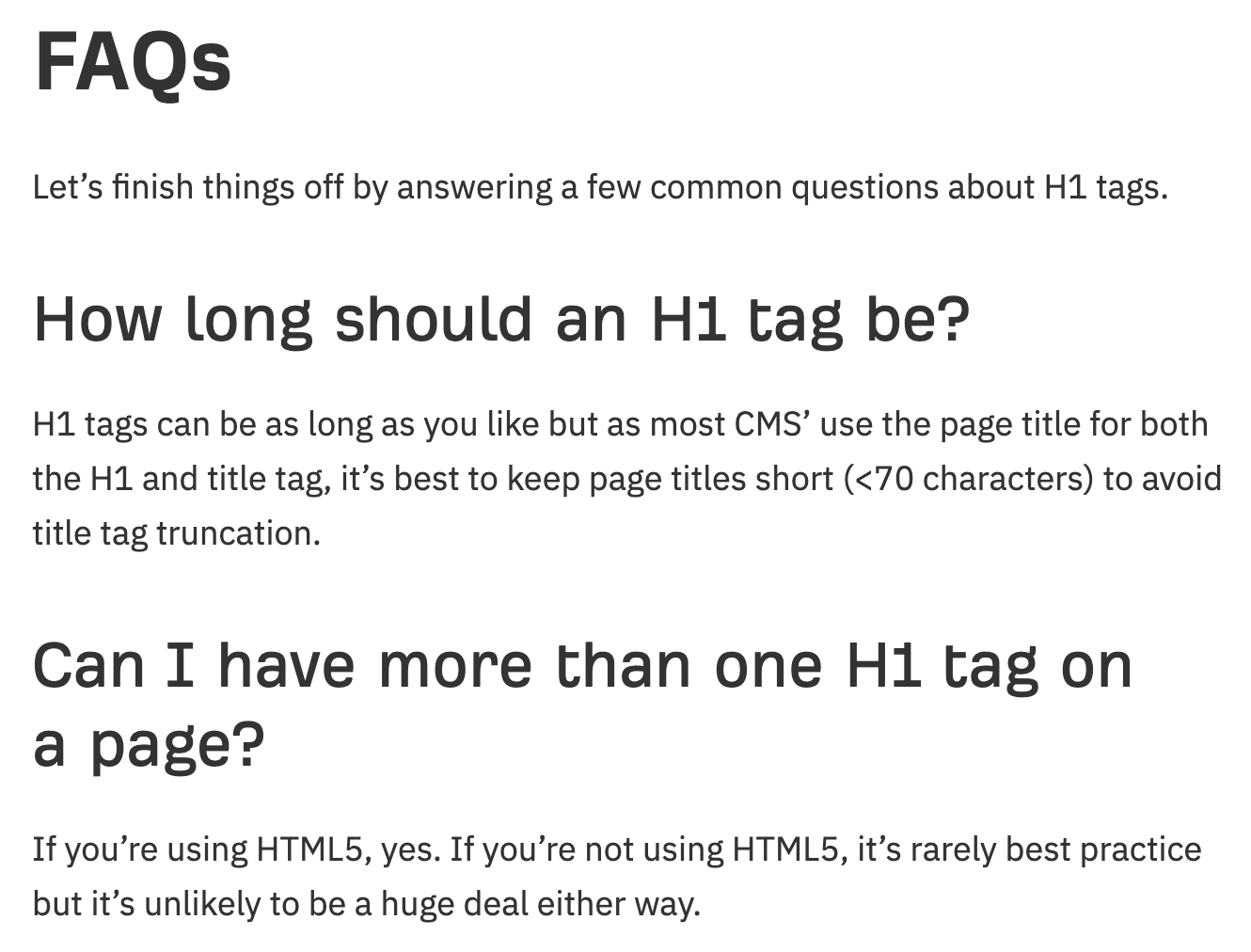
Reviews
One of the most popular content formats is the review format. This format is fairly self-explanatory—visitors to your site are expecting the product or service to be reviewed.
Let’s take a look at a “review” SERP in Keywords Explorer.

This is one of the easier-to-spot formats, and you can see almost every SERP result title has the word “review” in it.
When it comes to writing reviews, Google provides detailed guidance on how to write a good review, which you can read about below.
Many content creators know how to format content. But in the rush to produce content, it’s easy to let the quality of the formatting slide or omit it altogether.
Here’s a reminder of what you should and shouldn’t do:
Don’t make your article needlessly long—keep it succinct and to the point
If you are writing to reach a word count, then you are creating content wrong. You should really focus on writing the best blog post you can.
Though, it’s useful to know how long different pages on the SERP are because it gives you a sense of the opportunity available.
The best way to check is to use Keywords Explorer’s SERP overview, as it lists the word count of the top pages on the SERP.

Using a tool like this, we can see that for this topic, the number #1 ranking article is the shortest article on the SERP.
So if we hired a freelance writer to write a 4000-word blog post on “what is a latte,” chances are, it would be too much.
Use text formatting for emphasis
Basic text formatting, like using bold, italic, or <a> links, is a good way to highlight certain parts of your content for search engines.
Google’s John Muller had this to say about bolding text:
Does bolding important points on a paragraph help the SEO? Yes it does. It does help us to better understand that paragraph or that page.
Use a table of contents
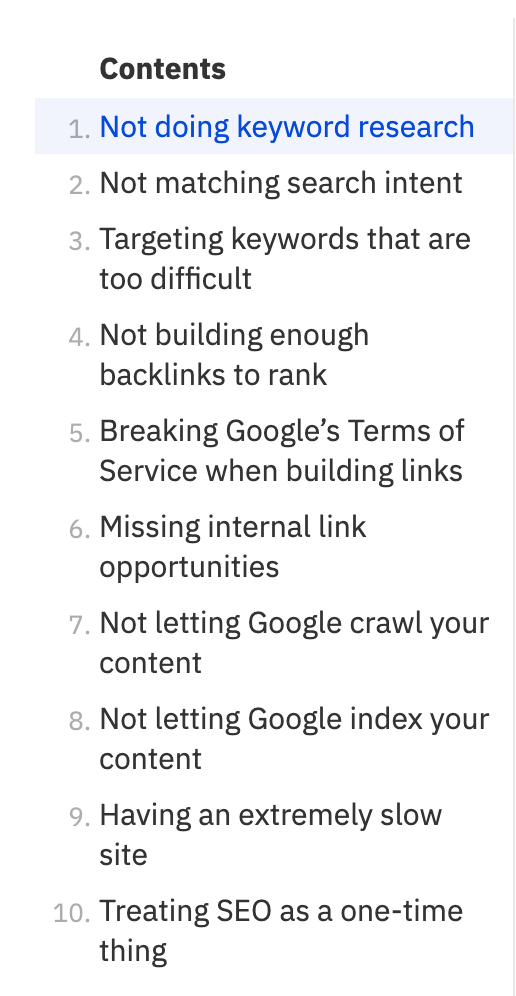
I mentioned making your blog posts scannable earlier on. In my opinion, there is no better way to do this than by adding a table of contents, as it summarizes your content in a few lines that users can click.
Adding a table of contents is a good way to allow your page’s visitors to scan your content’s core topics quickly.
It can also trigger sitelinks, which can potentially help you win even more organic clicks.
Tip
Use internal linking to explain other concepts
Internal linking for SEO is one of the most powerful aspects of formatting a blog post, in my opinion.
Check out our video and guides on how to do it below.
Use external links when linking to useful resources
External links should be used more sparingly than internal links. But it’s good to link to relevant, trusted sources that help provide context for your content.
Add an author bio
Adding an author bio is a good way to provide legitimacy for your readers. If visitors to your site can see that the content is written by a real person, it adds to its authenticity.

At Ahrefs, we have an author bio below every post with links to our social media profiles.
Use images to enhance your content
Generally speaking, it’s a good idea to add images to help convey more meaning to your content.
It’s important because some SERPs will pull through images from your articles.
Here’s an example where images from my blog post on website structure were pulled into the Google SERP:
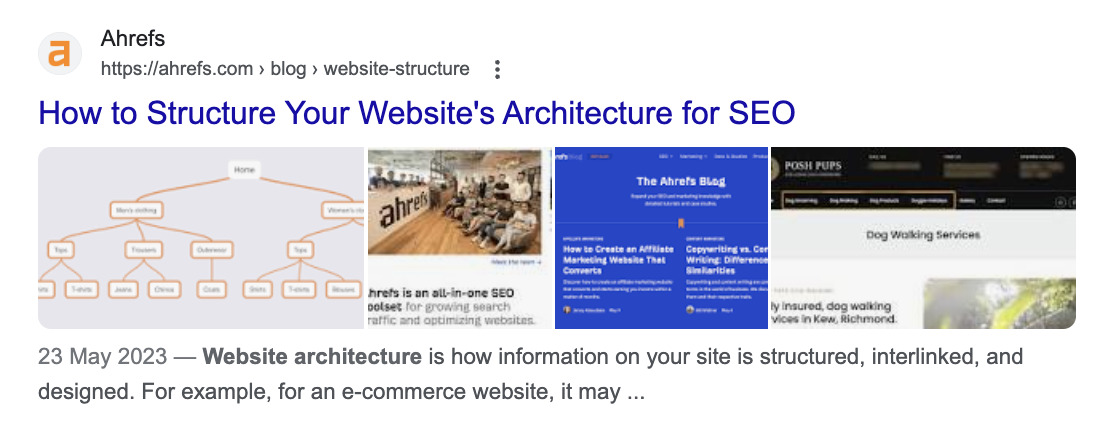
Use original, web-ready images
When it comes to images, it’s easy to use a stock image. But a better idea is to use your own original images where possible. They also should ideally be “web ready.” This means using WEBP image formats for the best performance.
When it comes to optimizing your images, you can also use alt text as part of your basic image optimization.
Final thoughts
Many of the elements of formatting a blog post for search are not difficult. Yet surprisingly, many online publishers still don’t take the time to do it.
Taking a structured approach to formatting can help your content stand out from the crowd and get it recognized on the SERPs.
Got more questions? Ping me on Twitter. 🙂
